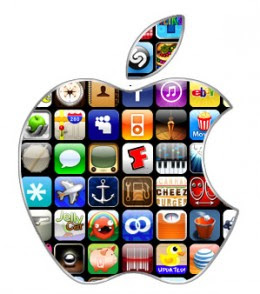Hi Friends ! most iOS users, you have lots of apps. It’s all too tempting and all too easy to buy new ones (or download free ones) from the App Store. As a result, you probably have a number of games, productivity apps, and utilities on your iPhone or iPad that you’ve hardly ever used and aren’t likely to use in the future.But if you keep doing that, those apps will start to crowd your iOS device (and your iTunes library), taking up space and requiring frequent updates. That’s why it’s a good idea to periodically get rid of the apps you don’t use anymore. (You can always download them again from the App Store if you change your mind.) Culling your apps library can make managing your app collection easier and free up precious storage space. Here are four ways to do it.
 BEST FOUR WAYS TO IOS APPS DELETED PROCEDURE'S:
BEST FOUR WAYS TO IOS APPS DELETED PROCEDURE'S:
TAP AND WIGGLE:
Deleting apps on an iOS device is simple: Just tap and hold any app icon until all the icons start wiggling. You’ll notice that many, if not most of them, have a little X at the top left corner..To delete an app, tap the X, then tap Delete in the dialog the displays. Note that doing so deletes not only the app, but also all of its data. So if you think you’ll need an app again soon, and you have stored data, settings or completed levels for it, you might want to think twice before tapping that X.
FROM SETTINGS;
Another way to delete apps on an iOS device is from the Settings app. Tap Settings > General > Usage, then look at the apps that display at the top of the window in the Storage section. This list is useful, because it shows how much storage each app actually uses. That may include just the app itself or the app plus all its attendant files and data. If you need to free up a specific amount of space perhaps when you want to download a movie this is a good place to look.Deleting from here is simple, too: Tap on an app’s name, then tap Delete App. You may find this quicker than tapping icons if you want to delete a lot of apps at one time.
FROM iTUNES:
When you delete apps from your iOS device, iTunes will not copy them back on to your device the next time you sync it. So the above techniques are great if you want to delete apps from specific devices but still retain them in your iTunes library.If, on the other hand, you want to nuke them entirely, go to iTunes and choose your Apps library. Click an app to select it, then press the Delete key. Another dialogue will ask you if you want to keep the app or move it to the trash. (You may indeed want to keep them; Ted Landau recently posted a tip discussing why that can be useful.) You can remove the apps from your iTunes library, but keep them in a folder on your Mac just in case.

may help to view the apps in your iTunes library in a list. Click the List button, then click the Purchase Date header to sort by the date you purchased the apps. (The Purchase Date is either the date you downloaded an app or, if it has been updated, the date of its last update.) Look at the apps with the oldest purchase dates to decide if you still use them.
WHEN UPDATING:
one other way you can delete apps from your iTunes library, and it’s one I use often. I have hundreds of apps, many that I use regularly, but most that I only tried out. It takes too long to go through my Apps library and try and remember what each app does. So I wait until there are updates.
In iTunes’ Apps > Updates window, you’ll see a list of new versions of apps that you can download, when an app has been updated. When I see an app in the Update window that I don’t use anymore, I delete it. To do this, right-click on an app’s icon and choose Delete. This deletes the app itself from your iTunes library, and also removes the update notification. The next time you sync your iOS devices, the apps you have deleted from your iTunes library will be removed from your devices.
TOP AND BEST iOS APPS: CLICK HERE
ANDROID APPS:
CLICK HERE



